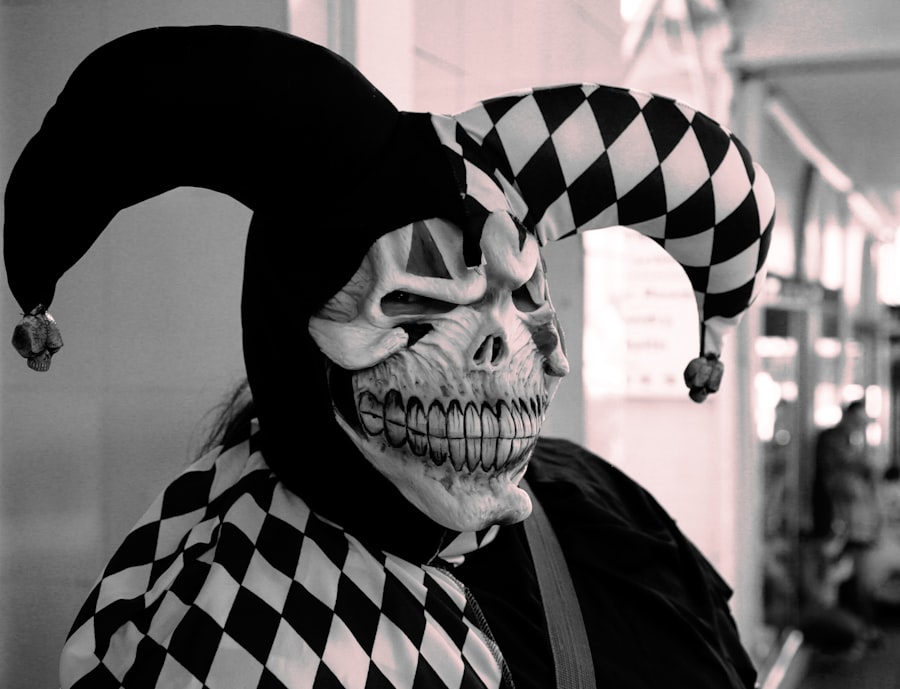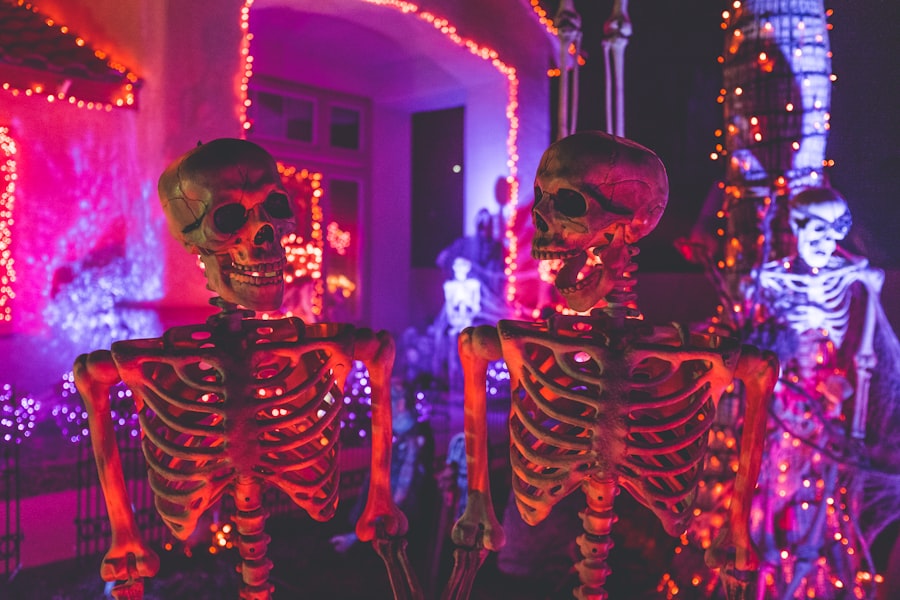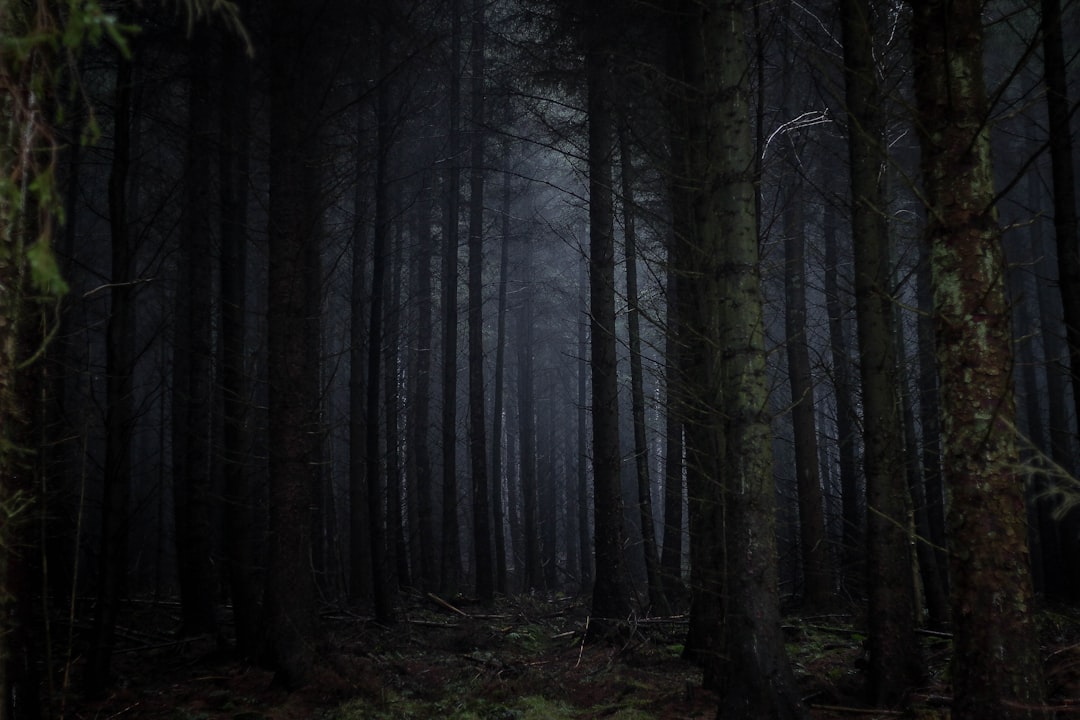Projection mapping is a cutting-edge technology that transforms ordinary surfaces into dynamic visual displays. By using specialized software and projectors, creators can project images, animations, and videos onto three-dimensional objects, making them come alive in ways that traditional displays cannot. This technique allows for a seamless blend of the physical and digital worlds, enabling artists and designers to craft immersive experiences that captivate audiences.
You might have seen projection mapping in various settings, from art installations to concerts, but its application in themed environments, particularly haunted houses, has gained significant traction in recent years. At its core, projection mapping relies on precise alignment and calibration to ensure that the projected images fit perfectly onto the intended surfaces. This involves mapping out the dimensions of the object or space to create a digital template that guides the projection.
The result is a stunning visual experience that can evoke emotions, tell stories, and transport viewers into different realms. As you explore the world of projection mapping, you’ll discover how it can enhance various experiences, particularly in the realm of entertainment and immersive storytelling.
Key Takeaways
- Projection mapping is a technique that uses specialized software to project images onto irregularly shaped objects or surfaces, creating the illusion of movement and depth.
- The use of projection mapping in haunted houses has been on the rise, adding a new level of immersive and interactive experience for visitors.
- Projection mapping can create a spooky atmosphere in haunted houses by transforming ordinary objects into eerie, moving, and interactive elements.
- Projection mapping enhances the haunted house experience by adding an extra layer of fear and excitement, making it more engaging and memorable for visitors.
- The technology behind projection mapping in immersive haunts involves high-powered projectors, specialized software, and precise mapping of the physical space to create realistic and immersive effects.
The Rise of Projection Mapping in Haunted Houses
In recent years, haunted houses have embraced projection mapping as a powerful tool to elevate their scare factor and overall visitor experience. As the demand for unique and engaging attractions grows, haunted house designers are constantly seeking innovative ways to stand out from the competition. Projection mapping offers a fresh approach to creating eerie environments that can surprise and delight guests.
You may have noticed that many haunted attractions now incorporate this technology to enhance their storytelling and create more immersive experiences. The rise of projection mapping in haunted houses can be attributed to several factors. First, advancements in technology have made it more accessible and affordable for designers to implement.
High-quality projectors and software are now available at various price points, allowing even smaller haunted attractions to experiment with this technique. Additionally, as audiences become more sophisticated in their entertainment preferences, they seek out experiences that are not only scary but also visually stunning. Projection mapping meets this demand by providing a unique blend of horror and artistry that captivates visitors from the moment they enter.
Creating a Spooky Atmosphere with Projection Mapping

Creating a spooky atmosphere is essential for any haunted house, and projection mapping plays a crucial role in achieving this goal. By projecting haunting visuals onto walls, floors, and props, designers can craft an environment that feels alive with supernatural energy. Imagine walking through a dimly lit corridor where ghostly apparitions flicker on the walls or where eerie shadows dance across the floor.
This immersive experience can heighten your senses and make you feel as though you’ve stepped into another world. Moreover, projection mapping allows for dynamic changes in the environment that can keep guests on their toes. For instance, a seemingly ordinary room can transform into a chilling graveyard scene with the flick of a switch.
As you navigate through the space, you might encounter shifting landscapes or sudden bursts of light that create an unsettling atmosphere. This ability to manipulate visuals in real-time adds an element of unpredictability that enhances the overall scare factor, making each visit feel unique and thrilling.
How Projection Mapping Enhances the Haunted House Experience
The integration of projection mapping into haunted houses significantly enhances the overall experience for visitors. One of the most notable benefits is its ability to create a sense of immersion that traditional decorations simply cannot achieve. As you walk through a haunted attraction featuring projection mapping, you may find yourself fully enveloped in the story being told.
The visuals can complement sound effects and physical props, creating a multi-sensory experience that draws you deeper into the narrative. Additionally, projection mapping allows for storytelling elements to unfold in real-time. Instead of static scenes, you can witness animated sequences that reveal backstory or foreshadow upcoming scares.
This dynamic storytelling approach keeps you engaged and invested in the experience, as you never quite know what will happen next. The combination of visual storytelling and interactive elements creates an unforgettable journey through fear and excitement.
The Technology Behind Projection Mapping in Immersive Haunts
Understanding the technology behind projection mapping can deepen your appreciation for its role in haunted houses. At its foundation, projection mapping relies on high-quality projectors capable of producing bright, vivid images that can be accurately aligned with physical surfaces. These projectors are often paired with advanced software that allows designers to create intricate animations and effects tailored to specific environments.
Calibration is another critical aspect of projection mapping technology. Designers must meticulously map out the surfaces onto which they will project images to ensure perfect alignment. This process involves using specialized tools to measure dimensions and angles accurately.
Once calibrated, the software can adjust the projected images in real-time, allowing for seamless transitions and interactions within the haunted house environment. As you explore these immersive spaces, you’ll gain a newfound respect for the technical expertise required to bring such captivating experiences to life.
Projection Mapping as a Tool for Storytelling in Haunted Houses

Storytelling is at the heart of any successful haunted house experience, and projection mapping serves as a powerful tool for enhancing narrative elements. By incorporating animated visuals that align with the storyline, designers can create a more cohesive and engaging experience for visitors. Imagine walking through a haunted mansion where ghostly figures appear on the walls to recount tragic tales from the past or where animated objects come to life to guide you through the narrative.
This technique allows for greater flexibility in storytelling as well. Designers can easily update or change projections based on seasonal themes or special events without needing to overhaul physical sets entirely. This adaptability means that each visit can offer something new and exciting for returning guests.
As you immerse yourself in these stories brought to life through projection mapping, you’ll find yourself more connected to the characters and events unfolding around you.
The Future of Projection Mapping in Spooky Houses
As technology continues to evolve, so too will the possibilities for projection mapping in haunted houses. The future holds exciting potential for even more immersive experiences as advancements in virtual reality (VR) and augmented reality (AR) become integrated with projection mapping techniques. Imagine stepping into a haunted house where not only do projections surround you, but VR elements allow you to interact with ghostly apparitions or navigate through alternate dimensions.
Moreover, as audiences become increasingly familiar with immersive experiences, there will be greater demand for innovative storytelling methods within haunted attractions. Designers will likely explore new ways to combine projection mapping with other technologies such as motion sensors or interactive elements that respond to guest actions. This evolution will create even more engaging experiences that keep visitors coming back for more spine-tingling thrills.
Tips for Creating a Successful Projection Mapping Haunted House Experience
If you’re considering incorporating projection mapping into your own haunted house experience, there are several key tips to keep in mind to ensure success. First and foremost, invest time in planning your narrative carefully. A well-thought-out story will guide your design choices and help you determine where projections will have the most impact.
Consider how visuals can enhance specific moments within your narrative and create emotional connections with your audience. Next, focus on technical execution by ensuring that your projectors are properly calibrated and positioned for optimal viewing angles. Test your projections multiple times before opening night to iron out any issues with alignment or brightness levels.
Additionally, consider incorporating sound design alongside your visuals; synchronized audio can amplify the emotional impact of your projections and create a more immersive atmosphere. Finally, don’t shy away from experimentation! Projection mapping offers endless creative possibilities, so be open to trying new techniques or ideas as you develop your haunted house experience.
Engage with your audience by soliciting feedback after their visit; this information can be invaluable for refining your approach in future seasons. By following these tips and embracing the power of projection mapping, you can create an unforgettable haunted house experience that leaves guests both thrilled and terrified long after they’ve exited your attraction.
Projection mapping in haunted houses can create an immersive and terrifying experience for visitors. For those interested in exploring more horror-themed attractions, Crooked Horror offers a variety of options, including haunted houses, escape rooms, and more. One article on their website highlights the best horror escape rooms in the Midwest, providing readers with recommendations for thrilling and interactive experiences. To learn more about these terrifying attractions, visit Crooked Horror.
FAQs
What is projection mapping?
Projection mapping, also known as video mapping or spatial augmented reality, is a technology used to project images onto irregularly shaped surfaces, such as buildings, objects, or even landscapes, to create the illusion of movement and depth.
How is projection mapping used in haunted houses?
In haunted houses, projection mapping is used to create immersive and interactive experiences for visitors. It can be used to project spooky images, animations, and special effects onto walls, floors, and props to enhance the overall atmosphere and scare factor.
What are the benefits of using projection mapping in haunted houses?
Projection mapping allows haunted house designers to create dynamic and customizable experiences that can be easily changed or updated. It also provides a more immersive and realistic environment for visitors, as the projected images can interact with the physical space and props.
What are some popular examples of projection mapping in haunted houses?
Some popular examples of projection mapping in haunted houses include using it to create ghostly apparitions that appear to float through walls, projecting creepy crawlies that seem to skitter across the floor, and creating illusions of shifting walls or floors to disorient and surprise visitors.
What are the technical requirements for implementing projection mapping in haunted houses?
Implementing projection mapping in haunted houses requires specialized projectors, media servers, and content creation software. It also requires careful planning and calibration to ensure that the projected images align correctly with the physical environment.

No responses yet